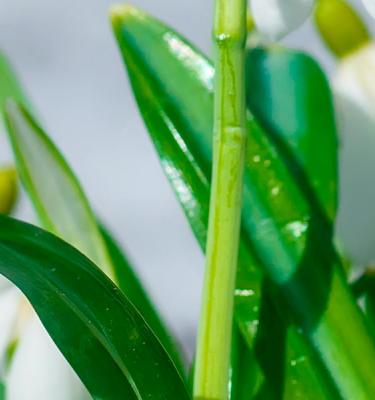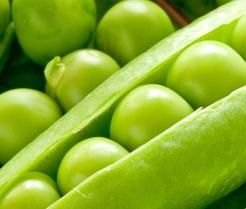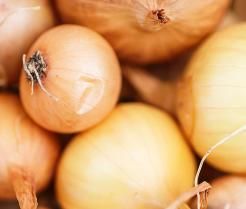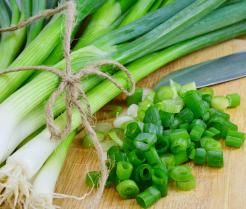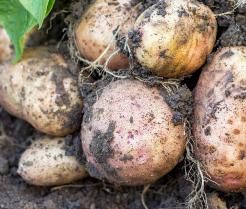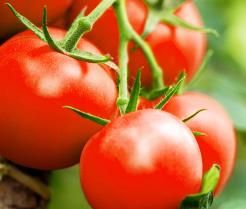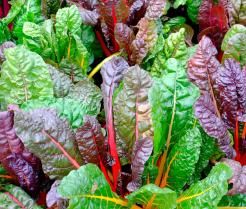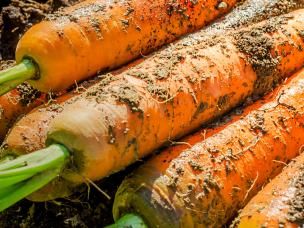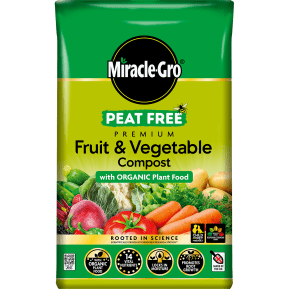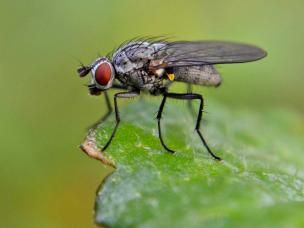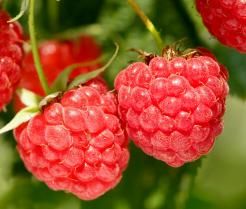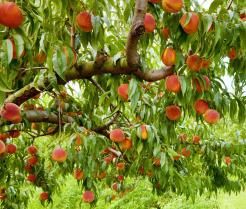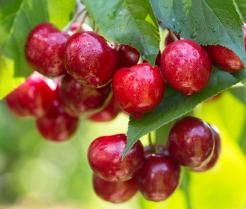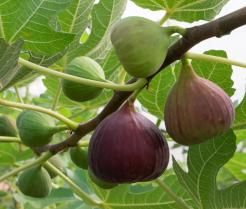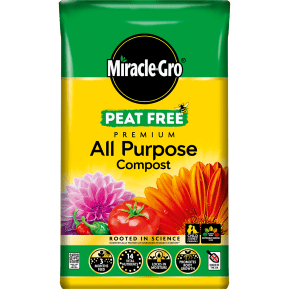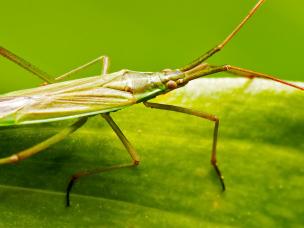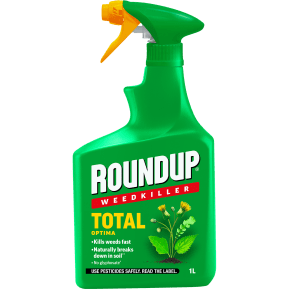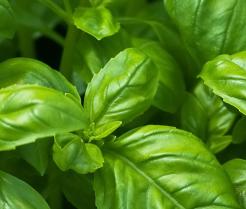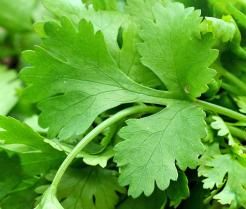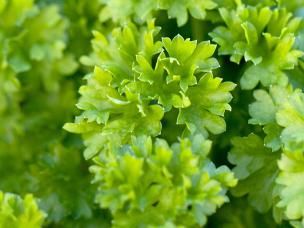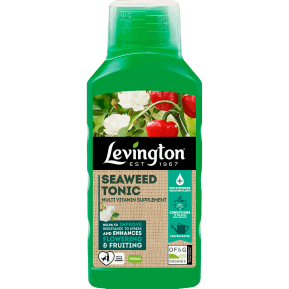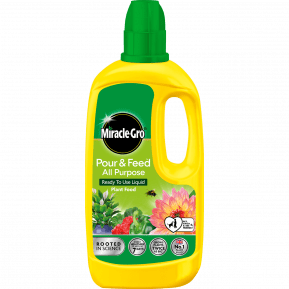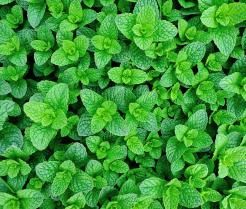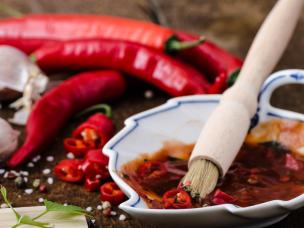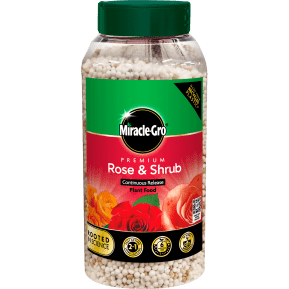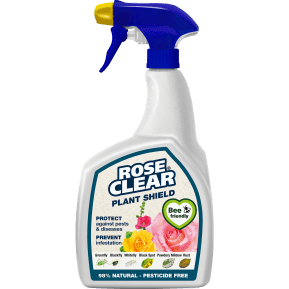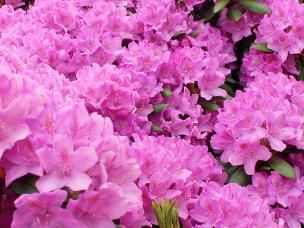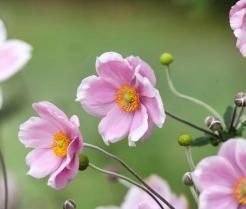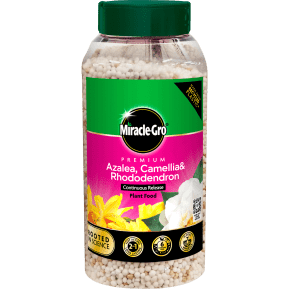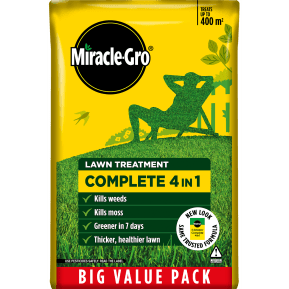March Gardening: Your Monthly Garden Guide
The days are noticeably longer in March than in preceding months, providing an opportunity to get out into the garden to enjoy some early spring sunshine. Frosts and sometimes windy weather mean that some tasks must wait, but there is optimism in the air with warmer weather and longer days ahead. As the temperatures continue to rise and plants start to wake up, so do pests and diseases, so it’s useful to make some early checks on the health of your garden. With the arrival of spring, there’s no shortage of options when it comes to choosing what to grow in March, so it’s time to dust off your tools and get busy in the garden again.
What to plant in March and other March gardening tips
If you’re considering what to do in March in the garden, then you’re almost spoilt for choice. It’s a great time of year to start planting fruit, vegetables and herbs so that you can harvest delicious homegrown crops later in the year. To find out what to plant in March – whether fruit, herbs, bulbs or flowers – choose a category below and enjoy our top March gardening tips for a rich and plentiful garden.
With the seasons changing and the days getting longer and brighter, there’s plenty to be done in the garden in March whether you’re growing fruit, veg, herbs or spices. Options for planting are abundant and you’ll also likely find yourself collecting a sizeable harvest. Above all though, it’s a crucial time of year to do some garden maintenance, as the seasons are changing, bringing new opportunities and challenges for your plants. View the seconds below for some ideas of what to plant in March.
Vegetables
If you tend a vegetable patch, then this is likely the time of year when you find yourself wishing you had more space, as there is an abundance of vegetables to grow in March. Not only is it a great time to plant vegetables, but it’s also harvesting season for any plants sown in summer or autumn. There are lots of options for things to do this month, so choose from the sections below for plenty of inspiration.
What vegetables to plant in March
It’s a prime time to sow vegetables and there are so many options to choose from. Consider the space you have available and pick your favourites from below. We suggest growing a mix, and growing more than just your favourites. A wide variety of veg seeds means something tasty is always coming through; perfect for a balanced diet, staggered harvests, and learning what works best in your patch. Plus, if one crop struggles, another might thrive. Try some veggies you’ve never grown or even eaten before – especially the weird and wonderful ones you won’t find in the shops.
Plant seedlings of the following
If the weather’s still on the chilly side, don’t rush in – it's better to wait until the soil warms. Holding off for a week or two won’t set you back. In fact, seeds sown into warm soil usually catch up fast and are far less likely to rot in cold, soggy ground.
Vegetable plant maintenance in March
Once you’ve planted this month’s veggies and collected the harvest, it’s time to turn your attention to some essential maintenance for any remaining vegetables . Start by hoeing around all plants to ensure there’s minimal competition for water and nutrients. Do this several times throughout the spring, and you will find that very few weeds pop up later in the year.
If you have any of the following vegetables, then they will have some specific needs during March, so make sure you don’t neglect them.
Aubergines, peppers and other plants sown under glass earlier in the year can be moved to larger pots. At this point, it may also be worth preparing a warm, sunny spot to move your peppers to (both chilli and sweet) in early summer.
Peas need support, as they like something to wrap their tendrils around in order to grow upwards. Twigs with a knobbly surface or netting attached to supports at either end of a row of peas will do the job nicely.
Tall varieties of broad beans should be staked in case of early spring winds and, later in the month,
you can pinch out the top 7.5cm (3 inches) of each plant to deter blackfly. It’s the season for pests, so you may also want to consider using a fine mesh of 1mm to cover your carrots to prevent carrot root fly. This pest can go largely unnoticed until you dig the crop up, only to find small brown tunnels have spoiled the root.
Birds sometimes like to pull sets of onions from the ground, so check them regularly and poke them back in if necessary. You can weed around them with your hands.
What vegetables to harvest in March
If you planted vegetables in summer and autumn last year, then you can expect to start harvesting them from March. In particular, look out for:
- Broccoli
- Brussels sprouts
- Cauliflower
- Celeriac
- Chard
- Kale
- Leeks
- Lettuce
- Purple-sprouting broccoli
- Spring cabbage
Once you’ve collecting in your harvest, consider mulching the soil with composted or chipped bark. This will improve the soil health and help to suppress weeds.
Fruit
If you’re wondering what fruit to plant in March, then it might be your last chance to get some varieties of currants and berries in the ground. On the whole though, March is a quiet month for planting and harvesting fruit, so take the opportunity to get some of that garden maintenance done that you’ve been putting off!
What fruit to plant in March
With the winter months receding and the temperatures finally starting to rise, there’s just enough time left to plant fruit bushes and trees. Some good options for March include:
- Apricots
- Blackberries
- Blackcurrants
- Cherries
- Figs
- Gooseberries
- Grapes
- Mulberries
- Peaches
- Plums
- Quince
- Raspberries
- Redcurrants
Under glass you could also sow the following seeds:
- Melons
- Physalis (cape gooseberries)
These fruit trees and bushes can all be planted in March:
Melons and cape gooseberries (physalis ) will need to be potted on several times before they can be planted out in the garden in late spring. They will thrive in a long, warm summer, and are a great talking point for visitors to your garden.
Make sure to plant new blueberry bushes near to each other to encourage cross-pollination between them. Use a large pot which is at least 45cm (18 inches) in both diameter and depth and fill it with ericaceous, peat-free compost. Now all you have to do is await the delicious and plentiful crops of blueberries in the summer.
When planting your fruit bushes, dig a hole and backfill it with a mixture of soil and a peat-free compost. This will control water availability, and keep your plants fed for up to six weeks, allowing them to put down strong roots. Compost can also be used in pots indoors.
Growing fruit in March
The time you’ll save in harvesting this month will easily be made up for in maintenance, as there’s a lot to do to give your fruit trees a good start to the springtime and to optimise the amount of fruit you will be able to harvest later in the year. It’s going to be a month of weeding, feeding, pruning and holding those garden pests at bay.
When it comes to weeding in March, you’ll notice that this is the time of year when perennial weeds such as bindweed and dandelions start to appear. Remove them as soon as you see them, and either drown or dry them out to stop them returning. Many varieties of soft fruit have shallow roots, so weed around these in particular and consider using a naturally derived weed control if the weeds are getting too invasive. Finally, you may find that your raspberries have been too successful and have started to pop up all around your garden - dig these up to prevent them from spreading to unwanted areas.
There’s not too much pruning to do this month. Just remember to prune any container-grown figs or new plum trees if they are being trained to a particular shape.
Remember to feed and/or mulch apricots, currants, gooseberries, nectarines, peaches and raspberries with a peat-free compost. Carpet strawberry beds with straw so that the berries won’t touch the soil.
Finally, be on the lookout for pests and diseases, as this is the time of year they start to appear. Currant bushes, blueberries, gooseberries and raspberries should be netted to prevent birds from getting to the fruit before you do. Prop the netting up on canes with upturned pots on top of each one. Remember to remove the netting from time to time to allow pollinators to get to the flowers.
You should also check for woolly aphids on apple trees. These are small, pale fluffy aphids which can cause damage to plants which then allows infection in. Squash them or spray them with water and repeat if needed. If you have cherry trees, peaches, apricots or nectarines, drape fleece of hessian over them to protect them from any lingering frosts.
What fruit to harvest in March
Unfortunately, there are very few fruits that are in season in March. In fact, rhubarb is the only ‘fruit’ that can be picked at this time of the year, and it’s technically not even a fruit! The last of the apples and pears kept from last year may still be available if you were lucky enough to have sufficient quantities to store, but other than that you can put your feet up on the harvesting front.
Herbs and spices
If you’re considering what herbs to plant in March then you may have more luck leaning into indoor planting at this time of year, although there are a few that can be planted outside. It is, however, the ideal time of year to harvest many herbs and spices, so get brushing up on your favourite recipes so you can use your crop to great effect!
What herbs to plant in March
Seeds of the following herbs can be sown indoors in March, on a windowsill or in a greenhouse:
- Basil
- Chives
- Coriander
- Dill
- Lemon balm
- Marjoram
- Oregano
- Parsley
- Sage
Once they’ve germinated, they can be pricked out into bigger pots to grow on further. They can then be moved outside to containers, or to the edge of a flower bed where they can easily be reached for harvesting once the threat of frost has passed. If you’re repotting plants, take the opportunity to enrich your soil with a peat-free compost to help control water availability and encourage strong root growth.
Plant seedlings of the following
Other herbs can be planted straight outside, either in borders or large pots. They will be ready to harvest later this same year, adding fragrance and flavour to dishes. These include:
These are all perennials. They will provide you with a crop for many years with very little effort - just prune them to keep the plants at a size and shape that suits your garden.
Thyme is widely available as a common variety, but there are some unusual cultivars which will provide even more interest in the garden. Look out for thyme plants that also carry the scent of caraway, lemon, lime and orange.
Herb and spice plant maintenance in March
When it comes to herbs and spices, March is all about harvesting and enjoying your hard work, but there are a few bits of maintenance you may want to keep on top of.
Rosemary plants will likely be putting on a lot of growth at this time of year, so make sure you prune them if you want to keep them at an attractive size and shape. You should lift and divide chives into smaller portions if they are looking tired or congested, and thyme can also be divided. You can feed the latter with a seaweed or more general organic plant food.
What herbs and spices to harvest in March
With the hours of daylight increasing by the day, many herbs will quickly put on a lot of growth in March. The following plants will produce leaves that can be harvested now:
- Chives
- Coriander
- Mint
- Parsley
- Rosemary
- Sage
- Thyme
Check out our homemade marinade recipes for some ideas of what to do with that new crop of herbs.
As a shoulder season, March marks a transition in your garden. It might be your last opportunity to plant some new bare-root roses, and it’s the ideal time of year for sprucing up your borders with some ericaceous plats and shrubs. It’s also a good idea to check your plants over for potential pests, as they will be arriving along with the warmer weather.
Roses
If you’ve been asking yourself, ‘can I plant roses in March?’ then the answer is – yes, just about. When it comes to roses, March is very much the month of last chances, both for planting and pruning. Put them at the top of your priority list for March gardening jobs, as April will be too late.
What roses to plant in March
March is the last opportunity to plant bare-root roses, and you may be able to pick up a bargain as growers clear the last of their stocks ahead of a new season. Buying online can be convenient and give you a huge range from which to purchase but buying from a garden centre allows you to check the quality more carefully. Check that the rose:
• Does not show signs of pests or diseases which could spread to other plants
• Has a healthy root system which has not dried out and is evenly developed
• Comes with a multi-year guarantee, so that you can get a refund or replacement if it fails to survive after you have planted it
Since it’s your last opportunity to plant bare-root roses, it’s advisable to use a peat-free compost to improve the soil and promote strong root growth and control water availability. This will give your new rose bushes the best change of settling in.
Growing roses in March
March is the last opportunity to prune any roses that you planted last year. You should focus on removing diseased or dead branches, or branches that are rubbing against others and may cause damage. The following roses can be pruned now:
- Bush roses
- Groundcover roses
- Patio and miniature roses
- Shrub roses
To give them the best chance to flower vibrantly in summer, feed your roses with a specially formulated food which contains ingredients particularly suitable for roses. Once you’ve fed them, give them a thorough mulching, making sure that the mulch does not touch the stem.
Now is also a good opportunity to re-pot any roses in containers, using a specialist, peat-free compost which contains the optimal balance of nutrients.
Finally, don’t forget to check your roses over for early signs of the following problems:
- Rose rust: Look out for yellow and orange marks on leaves, which may turn black, making sure to prune and destroy any affected growth.
- Rose aphids: Groups of small green or pink insects on young growth, which may also be indicated by sticky residue and black ‘soot’. You can encourage ladybirds and hoverflies who are natural predators or wait until April to use a specialised, naturally derived pest control.
- Rose black spot: Look out for black patches on leaves and lesions on stems, making sure to remove any affected growth, including fallen leaves.
Plants and shrubs
If you’re wondering what plants to plant in March and you have non-alkaline soils, then you’re in luck. There are plenty of ericaceous plants that will take to the soil at this time of year. If you’re not planning to plant anything new, then make sure you keep on top of your maintenance, as they’re likely to start growing rapidly at this time of year.
What plants and shrubs to plant in March
The following plants love slightly acidic soil, and can be planted in the garden in March:
• Azaleas
• Heathers
• Witch hazel (Hamamelis)
• Hydrangea
• Magnolias
• Japanese andromeda (Pieris japonica)
• Rhododendrons
When buying Rhododendrons, there are plenty of varieties to choose from, some deciduous and some evergreen. Rhododendrons range a great deal in how big they are once fully grown, so select one which is suitable for the space you have available. They are woodland plants, so tend to be happiest in dappled shade where they will supply your garden with large, showy blooms. Consider using a peat-free compost specially designed for ericaceous plants.
Growing plants and shrubs in March
March is a busy time for looking after ericaceous plants. Alongside deadheading, dividing and mulching, you’ll need to keep on top of your feeding.
Plants in containers can be fed fortnightly with a suitable naturally derived liquid plant food, while a slow-release specialist plant food is appropriate for rhododendrons and camellias. Always remember to water ericaceous plants with rainwater, if possible – you can collect this in a garden water-butt.
Plants in the ground can be mulched with ericaceous peat-free compost, or sulphate of ammonia, and you should weed around any newly planted smaller plants (such as heath) to give them unfettered access to moisture.
If you’ve kept azaleas in a cool room over winter to induce dormancy, don’t forget to bring them back out into a warmer room. Giant wake-robin (trillium chloropetalum) and Japanese andromeda (pieris japonica) can both be deadheaded, while Japanese anemone (anemone hupehensis), lily turf (liriope mascara) and checkerberry (gaultheria procumbens) should all be divided.
Finally, it’s a good opportunity to monitor all ericaceous plants for yellowing leaves, which can indicate that the soil is not acidic enough. You can adjust the acidity levels by adding a mulch of specialist peat-free compost designed for azaleas, camellias, rhododendrons and other ericaceous plants.
Aesthetic motivations aside, it shouldn’t really be essential to prune any ericaceous plants in March, and sacred bamboo (nandina domestica) and camellia plants should only be pruned to retain their shape. However, if you want to, you can prune:
• Japanese anemone
• Camellias
• Heathers
• Hydrangeas
• Sacred bamboo
• Rhododendrons
Remember to remove dying flowers and foliage from camellias, hydrangeas and Japanese anemone only to improve their appearance.
When it comes to lawn care for March, for most of us it will be the first time we dust off our lawn mowers for the year, so remember to sharpen those lawnmower blades. The first cut of the season just needs to be a light trim, but you can cut the grass shorter again later in the month.
Lawn maintenance in March
When giving your lawn the first trim of the year, consider leaving a small area uncut to provide pollinators with wildflowers to forage from – clover and daisies are not only attractive but are a choice meal for bees and butterflies.
If you have any borders next to your lawn, creating a 5-8cm (2-3 inch) deep edge along the borders will make them easier to access, and the grass edges easier to maintain throughout the rest of the year. Don’t forget to add your grass clippings to the compost heap, as it’ll provide a good source of nitrogen and help to get it active again.
Recommendation: When trimming the edges of your lawn, use a half-moon edging tool against a plank of wood for straight edges, or a firm hosepipe for consistent curves.
There are a few potential problems to watch out for at this time of year:
- Frosts and heavy rain – remember to keep off the grass in either of these conditions as footfall can damage the lawn and even destroy patches of grass.
- Moss – if we’ve had a particularly damp winter, you may find signs of moss in your lawn. Small infestations can be raked out but consider using a lawncare product designed to target moss if the problem is endemic.
- Damp areas – if you’ve noticed these over the winter, you can add sand to help with drainage.
You might also want to take this opportunity to carry out some routine maintenance to your lawn, as it’s likely to be the most attention your lawn has had this year. Some jobs to consider include:
- Aerating the lawn using a garden fork. Pay particular attention to heavily worn patches, pushing the fork 3-4 inches into the lawn every 3-4 inches or so, and wiggling it around. This can help to reduce unsightly moss.
- Use a spring-tined rake to remove dead grass. Leave some of the dead material in a pile to allow birds to collect and use it in their nests.
- Top dressing the lawn if there are hollows to even out, incorporating lime to promote strong growth.
- Sowing grass seed if there are any noticeably bare patches.
- Feeding the lawn with a high-nitrogen, organic plant feed. Plant feeds made specifically for lawns are aimed at giving grass exactly the nutrients it needs. Water the lawn afterwards to help the roots to absorb the feed.
